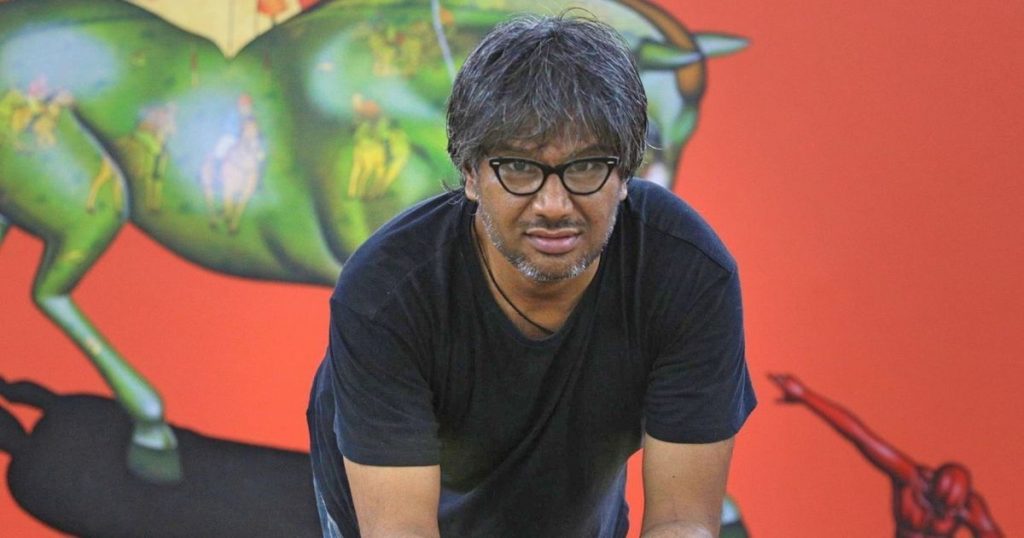Introduction
Eight years after the shocking murders of acclaimed artist Hema Upadhyay and her lawyer Harish Bhambhani, a Mumbai sessions court has delivered a significant verdict. In a case that garnered national attention, Hema’s estranged husband, artist Chintan Upadhyay, has been convicted of conspiracy, shedding light on a complex tale of marital discord and alleged motives. The case also involves the main accused, Vidyadhar Rajbhar, who remains at large, and three others convicted for murder, destruction of evidence, and breach of trust. This article provides an overview of the case and the factors leading to Chintan Upadhyay’s conviction.
The Investigators’ Findings
The prosecution built its case on a combination of evidence, including Call Detail Records (CDRs), a confession statement from Pradeep Rajbhar (later retracted), and Chintan Upadhyay’s personal diary and drawings. These elements were crucial in establishing the motive behind Hema’s murder.
The Turbulent Marriage
Chintan and Hema Upadhyay, once considered Mumbai’s “It Couple” in the art world, had separate career trajectories despite their initial success. Hema was known for her ambitious collages, while Chintan embraced a more performative art style, even turning himself into an artwork by sitting naked and inviting others to paint him. Their careers thrived, but their marriage deteriorated, leading to Chintan’s move to Delhi.

In 2014, a family court granted the couple a divorce, citing their wild allegations against each other as evidence that “the essence of their marriage had gone.” Chintan was ordered to pay an alimony of ₹16.51 lakh. However, Hema subsequently challenged this ruling, deepening the acrimony between them.
Chintan’s Personal Diary
Chintan Upadhyay’s personal diary, filled with grievances about the breakdown of their marriage, played a crucial role in the case. Entries in the diary reflected his thoughts on the divorce and his puzzlement about why Hema, who seemed indifferent to him, wanted revenge.
Discovery of the Bodies
The case took a gruesome turn when, in December 2015, two life-sized cardboard boxes were discovered in a Kandivali nullah. These boxes contained the bodies of Hema Upadhyay and her lawyer, Harish Bhambhani. This discovery shocked Mumbai’s art world, where the couple had once been celebrated.
Motive for the Murder
The reason for Hema and Bhambhani’s visit to the Kandivali warehouse on the night of their murder was allegedly due to Vidyadhar Rajbhar, a fabricator they shared with Chintan. Vidyadhar had promised to show them compromising video clips involving Chintan, leading them to the location where they were killed.
Chintan’s Arrest and Subsequent Developments
Chintan Upadhyay was initially cleared of involvement after extensive questioning by the Mumbai crime branch. However, he was arrested on December 22, 2015, amid media attention. Pradeep Rajbhar’s confessional statement, later retracted but maintained by the prosecution as evidence, implicated Chintan in the killings.
The prosecution also relied on CCTV footage showing Hema and her lawyer entering Rajbhar’s fabrication unit and their bodies being loaded onto a tempo.
Chintan’s Defense
Chintan consistently denied the allegations, claiming to be a scapegoat in the absence of the main accused, Vidyadhar Rajbhar. His lawyers argued that he had no motive to eliminate Hema, as the divorce had been granted, and alimony payments had been made. They also highlighted the pre-existing professional relationship between Chintan and Vidyadhar Rajbhar.
Conclusion
The conviction of artist Chintan Upadhyay for conspiracy in the murder of his estranged wife, Hema Upadhyay, marks a significant development in this high-profile case. While the main accused, Vidyadhar Rajbhar, remains at large, Chintan’s conviction is based on a combination of evidence, including his personal diary and the discovery of the bodies. The case has shed light on the complexities of personal and professional relationships within the art world and the tragic consequences that can result from such conflicts. A detailed court order is expected in the coming days, providing further insights into the verdict.
Courtesy: Chintan Upadhya/Facebook

Contributor





